
Stella McCartney Summer 2022 Substainability Campaign. (Photo Credit: Fashionography)
As temperatures soar, breaking records in one of the hottest summers to date, it’s only natural to think about climate change and what more can be done to reduce our collective carbon footprint. This week saw the U.S. Senate poised to approve the most significant climate bill, at a whopping $369 billion (yes ‘B’ as in billion), that will sharply reduce carbon pollution. If it passes, this landmark legislation promises to slash greenhouse gas emissions by 40 percent – below 2005 levels – by 2030. It’s at least a start. Our fingers are crossed.
The fashion industry is also committed to doing their part, with prominent leaders such as Stella McCartney being one of the strongest voices in sustainable fashion. But what really is sustainable fashion? The answer is broad. Within the fashion industry it’s a combination different facets that include: ethical business practices, fair trade, supply chain transparency, minimal impact policies, give-back programs, upcycling, recycling, downcycling, circularity, and, arguably most important of all, sustainable materials that make up an ethical collection. The subject of this blogpost will focus on what’s new in sustainable materials which has become the newest and most high-tech approach to the future of fashion.

Sustainability in Fashion. (Photo Credit: Bibalex)
Designers know that one of the most effective ways to create an eco-friendly collection is by choosing sustainable fabrics. Thankfully today, sustainable fabrics have come a long way and technology is at the forefront of this change. Just think of the innovation that went into creating fabric made from a mushroom, an apple and a pineapple.
The type of fabric used to create a collection determines how much environmental degradation it ends up causing — or the practices that reverse it. Just keep in mind that the fabric choice directly affects the raw material sourcing (farming and petroleum drilling impact), water consumption and waste, material processing (chemicals needed to turn it into fiber), and end-of-life prospects (ways a garment can be disposed of) like can it be recycled or composted?
Luckily, environmentally friendly fabrics are pretty easy to find — if you know where to look. And the brands that use them are staking their claim for a better fashion future. And that, in turn, is good for people and the planet.
We are planning to cover advances in fashion sustainability for the next few months and will be featuring designers who are making a splash with their sustainable collections and what’s new in the world of natural, organic and vegan textiles.
ORGANIC COTTON
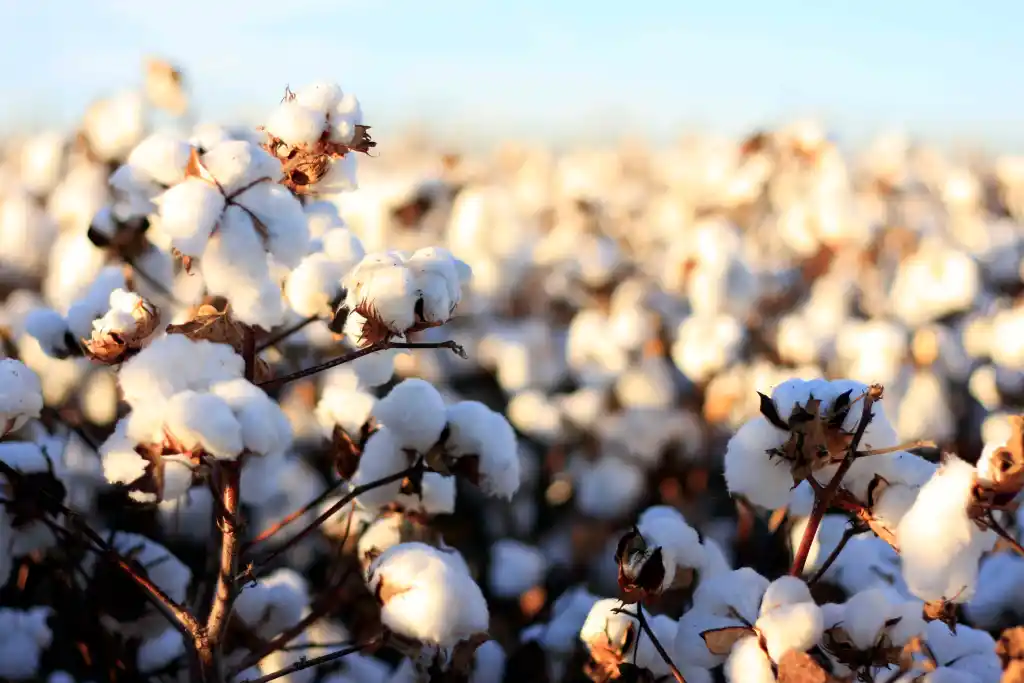
Organic Cotton Field. (Photo Credit: The New Fashion Norm)
Organic cotton is one of THE most natural fabrics you can find. It is grown without the use of pesticides and synthetic fertilizers and is processed without chemicals. Organic cotton farming uses 62% less energy and 88% less water than conventional cotton (which is surprisingly one of the single dirtiest crops around).
There are several certifications used with sustainable and ethical cotton to authenticate that a particular cotton was grown without pesticides or machine harvesting and processed without chemicals, leaving the final garment chemical-free. Other certifications ensure fair pay and safe conditions for farmers. Certifications include: USDA-Certified Organic, Global Organic Textile Standard (GOTS), Organic Content Standard (OCS), Better Cotton Standard, Fair Trade, Bluesign, and Oeko-Tex 100.
RECYCLED COTTON
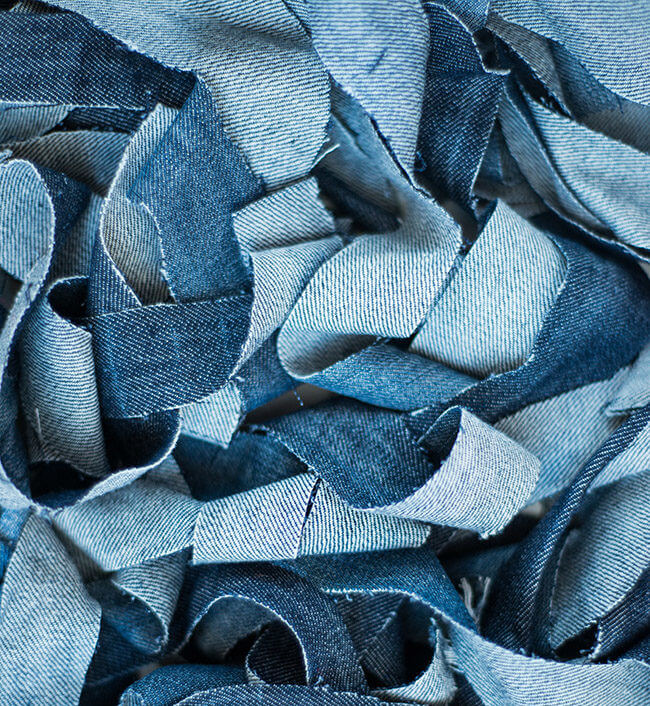
Recycled Cotton Denim. (Photo Credit: Cottonworks)
Recycled cotton is manufactured using either post-industrial or post-consumer waste. Plenty of slow fashion brands use recycled cotton and for good reason. This means that the fabric used is made from industry fabric scraps or other recycled cotton garments. Recycled cotton helps to prevent fashion waste from ending up in landfills. Be sure to watch our 3-part series on sustainable design by Noor Bchara, designer, CEO, founder of Upcycle Design School.
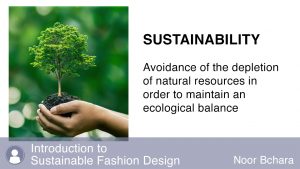
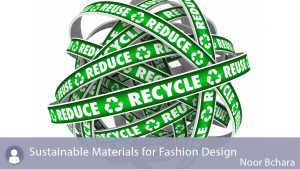
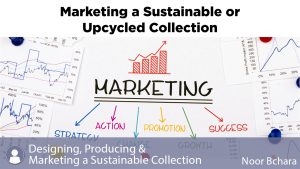
UoF’s 3-part series on sustainable design by Noor Bchara, designer, CEO and founder of Upcycle Design School
Recycled cotton certifications and regulation are difficult to determine, due to the inability of knowing the source of the materials used in the recycling process. However there are certain certifications and standards that exist and they include Global Recycle Standard (GRS), Recycled Content Standard (RCS) and Oeko-Tex 100.
It is also difficult to know whether recycled cotton is pure cotton (and therefore able to be composted) because a fabric can be recycled into recycled cotton even if it holds some synthetic blend (as long as the blend is less than 4%).
ORGANIC HEMP
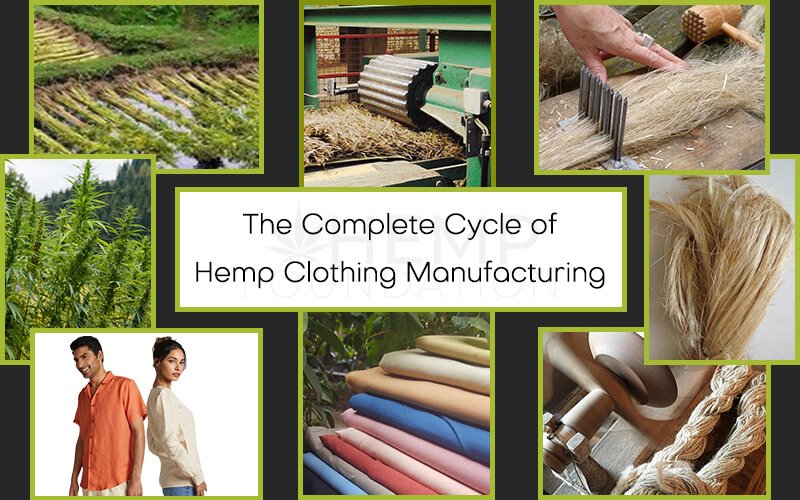
The Complete Cycle of Hemp Clothing Manufacturing. (Photo Credit: Hemp Foundation)
Hemp is one of the most eco-friendly natural fabrics around. It’s high yielding and growing hemp is healthy for the soil, due to the process of phytoremediation. Another feature of hemp is that it requires much less water than growing cotton.
Organic hemp is considered a carbon negative raw material. What this means is that the material actually absorbs CO2 from the atmosphere. Its certifications and standards include USDA-Certified Organic, Global Organic Textile Standard (GOTS), Organic Content Standard (OCS), Oeko-Tex 100, and Bluesign.
While organic hemp has many benefits as mentioned above and is naturally sun protective and antimicrobial, the downside is that it more difficult to grow and therefore tends to be somewhat more expensive than other sustainable organic fabrics,. Despite this, we can expect to see more of it in the future.
ORGANIC LINEN

Organic linen dresses. (Photo Credit: The Filtery)
Linen is almost identical to hemp in terms of sustainability and it is extremely light and breathable. Derived from the flax plant, linen’s growth requires very little fertilizer, pesticide, and irrigation, but unlike hemp, linen isn’t as high yielding. Linen is a popular and reliable fiber and can be used to create everything from clothing to bedsheets.
Certifications and standards for Organic Linen include USDA-Certified Organic, Global Organic Textile Standard (GOTS), Organic Content Standard (OCS), Oeko-Tex 100, and Bluesign.
ORGANIC BAMBOO (AKA BAMBOO LINEN)

Sustainable, Organic, And Antibacterial – The Benefits Of Using Bamboo in Fashion. (Photo Credit: Bamboodu)
Like hemp, bamboo consumes more CO2 than some trees. When bamboo is harvested, it can be done without destroying the plant itself. Translation, bamboo can renew itself at incredible speed (it’s one of the fastest growing plants on the planet) and can survive on rainfall alone. Bamboo’s certifications and standards include the Forest Stewardship Council, USDA-Certified Organic, Global Organic Textile Standard (GOTS), Organic Content Standard (OCS), Fair Trade, Oeko-Tex 100, and Bluesign.
Organic bamboo is one of the most sustainable fabrics, but depending on how it is processed, it could involve chemically intensive processes — and all the harmful impacts that come with it.
Mechanically processed bamboo is a better-for-Earth way to utilize bamboo, but sadly it makes up just a tiny amount of what is found in the market. Make sure to look for organic bamboo fabrics in its raw form, as opposed to that which is plasticized into bamboo rayon/viscose blends.
CORK
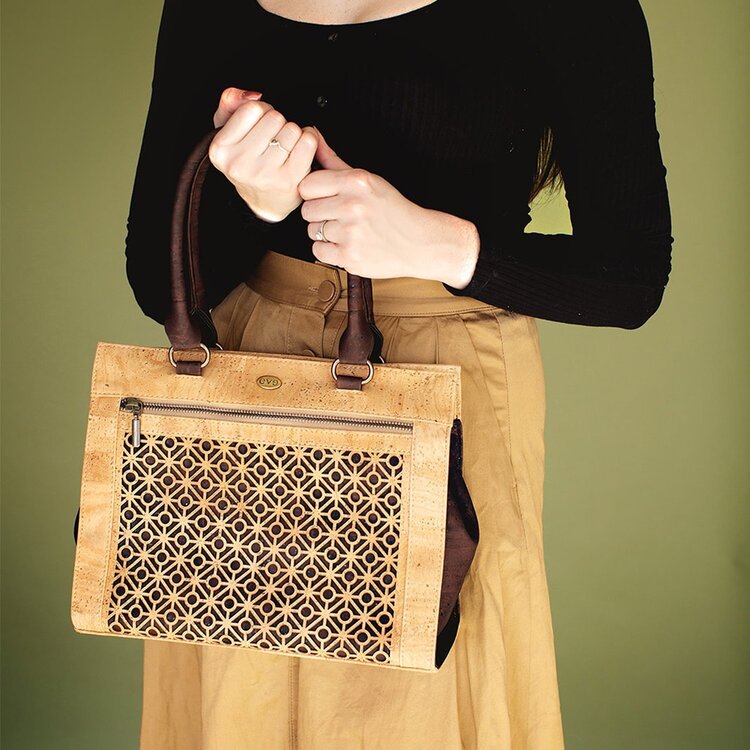
Cork handbag by Eve Cork. (Photo Credit: Eve Cork)
Cork has left the bottle and is now used to create fashion! Made from Quercus suber, commonly called the cork oak, a medium-sized, evergreen oak tree, cork is made by shaving the bark from the tree. In fact, the bark can be harvested—and should be harvested—to extend then tree’s life. While the tree regrows its bark, it consumes more carbon dioxide than most types of trees (and therefore another carbon negative material). As a result, cork plantations can actually act as a carbon sink.
Once cork has been harvested (which can sustainably happen to a tree every 9 to 12 years), the cork can be laid out in the sun to dry, and only requires a bit of water to transform the cork into a fabric suitable for fashion. The material has become a fashionable choice for vegan bags and shoes… and for good reason.
A LIST OF SUSTAINABLE FABRICS
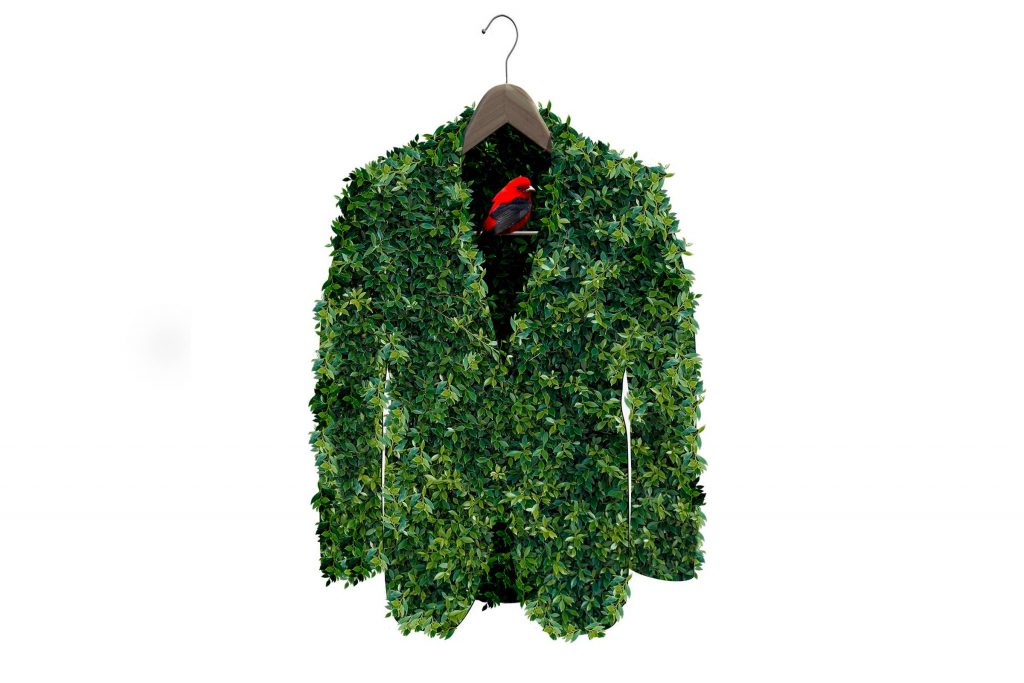
Fashion created by nature. (Photo Credit: Grailed)
Here is a list of highly recommended eco-fabrics for all you sustainable-minded designers out there:
Sustainable Semi-Synthetic Fabrics (mostly vegan)
Lyocell
Modal
Bamboo Lyocell
EcoVero
Pinatex
Scoby Leather
S.Cafe
Qmonos
Brewed Protein
Apple leather
Woocoa
Cupro
QMilk
Vegan, Synthetic Fabrics
ECONYL
Recycled polyester
Animal Derived Natural Fabrics (sustainable depending on source)
Sheep Wool
Merino Wool
Alpaca Wool
Cashmere
Camel
Yak Wool
Vegetable Tanned Leather
Down
Silk
Stay tuned to our blog to learn more about sustainable fabric choices that you should be considering for your projects! Also follow us on Instagram uoffashion, and on Facebook University of Fashion.
-------------------------------------
By: Antonia Sardone
Title: A NEW ERA IN SUSTAINABLE FASHION: THE RISE OF NATURAL & VEGAN MATERIALS
Sourced From: www.universityoffashion.com/blog/a-new-era-in-fashion-the-rise-of-natural-and-vegan-materials/
Published Date: Sun, 31 Jul 2022 23:55:52 +0000
Read More
Did you miss our previous article...
https://edmmusic.news/fashion-clothing/meow-wolf-vortex-festival-lineup-2022-in-denver
 FestivalsMusicNew ReleasesArtistsFashion & ClothingVideosPrivacy PolicyTerms And Conditions
FestivalsMusicNew ReleasesArtistsFashion & ClothingVideosPrivacy PolicyTerms And Conditions
